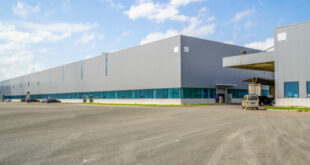Explore 10 strategic insights on commercial land for lease. Learn how to evaluate location, negotiate lease terms, and maximize returns for your business.
Commercial Land for Lease: 10 Strategic Insights for Success
Commercial land for lease offers businesses and investors an opportunity to secure prime real estate without committing to a full purchase. This flexibility can be especially appealing for startups, expanding companies, or developers testing a new market. However, finding and leasing the right commercial land involves careful planning, due diligence, and strategic negotiation. In this guide, we present 10 essential insights that will help you evaluate, secure, and maximize the benefits of commercial land leases. Whether you are a business owner looking to establish a new location or an investor seeking rental income, these tips will equip you with the knowledge to make informed decisions.
In the sections that follow, we break down the fundamentals of commercial land leasing, from location considerations and zoning regulations to lease structures and negotiation strategies. We also discuss common pitfalls and how to avoid them, ensuring a smoother experience for all parties involved.
Table of Contents
Understanding Commercial Land Leases
A commercial land lease involves renting a parcel of land for business or investment purposes. Unlike a residential lease, a commercial land lease can be more flexible, often allowing tenants to develop or modify the land according to their business needs. Common uses for leased commercial land include:
- Retail Development:
Setting up retail stores, malls, or shopping centers on prime land. - Industrial or Manufacturing Sites:
Building warehouses, factories, or distribution centers for industrial operations. - Office Complexes:
Developing office buildings or coworking spaces to serve local businesses. - Mixed-Use Projects:
Combining residential, commercial, and even recreational spaces into a single development.
Lease durations can vary widely—from short-term arrangements to long-term leases spanning several decades. This flexibility allows both landlords and tenants to adapt to changing market conditions or business objectives.
Benefits of Leasing Commercial Land
Leasing commercial land instead of buying can offer numerous advantages for both tenants and landlords:
For Tenants
- Lower Upfront Costs:
Leasing land typically requires less capital than purchasing it, freeing up resources for development or operational needs. - Flexibility and Scalability:
If your business outgrows the leased parcel, you can relocate or negotiate for a larger plot without the complexities of selling owned property. - Reduced Long-Term Risk:
Market fluctuations can make property ownership risky. Leasing shifts some of this risk to the landlord.
For Landlords
- Steady Rental Income:
Commercial land leases often command substantial monthly or annual rent, providing a reliable revenue stream. - Retained Ownership:
Landlords maintain ownership of the land, which may appreciate over time. - Potential for Development Partnerships:
Some leases involve joint ventures or profit-sharing, allowing landlords to benefit from successful developments on their property.
Understanding these benefits is essential before diving into the details of securing or offering commercial land for lease.
10 Strategic Insights for Leasing Commercial Land
To ensure a successful commercial land lease, consider these 10 strategic insights. Each point addresses a crucial aspect of the leasing process, from market analysis to contract negotiation.
1. Assess Location and Market Potential
Key Considerations:
- Demographics:
Evaluate the local population, consumer spending power, and workforce availability. - Accessibility:
Proximity to major highways, public transport, or shipping routes can enhance a site’s attractiveness. - Competition:
Identify existing businesses or developments in the area. A location saturated with competitors may require more aggressive marketing or unique selling propositions.
Action Steps:
- Conduct a thorough market analysis to gauge demand.
- Visit the site multiple times to assess traffic patterns, noise levels, and surrounding amenities.
- Consult local economic development agencies or chambers of commerce for data on future growth prospects.
Example:
A retailer seeking land for a new store might prioritize locations near residential neighborhoods with strong household incomes and minimal direct competition.
2. Understand Zoning and Land Use Regulations
Key Considerations:
- Zoning Classification:
Ensure the land is zoned for commercial or mixed-use development. Zoning codes often differentiate between light industrial, retail, and office uses. - Permits and Approvals:
Major construction or specific uses (e.g., hazardous material storage) may require special permits. - Setback Requirements:
Local ordinances may dictate how far buildings must be from property lines or public roads.
Action Steps:
- Consult local zoning maps and municipal planning offices.
- Verify any environmental or architectural guidelines that might affect building design or landscaping.
- Confirm that potential land improvements or expansions align with zoning restrictions.
Example:
A logistics company looking to lease land for a distribution hub should confirm that the local zoning allows for heavy truck traffic and 24/7 operations.
3. Determine the Right Lease Structure
Commercial land leases come in various forms. Choosing the right structure is crucial for balancing costs, responsibilities, and future flexibility.
Common Lease Structures:
- Ground Lease:
The tenant leases the land and may construct buildings or facilities on it. Ownership of any improvements often reverts to the landlord at the end of the lease. - Net Lease:
Tenants pay for real estate taxes, insurance, and maintenance (or some combination thereof) in addition to rent. - Gross Lease:
The tenant pays a fixed rent, while the landlord covers most property-related expenses. - Percentage Lease:
Rent is tied to the tenant’s revenue. Common in retail environments where landlords benefit from tenant sales.
Action Steps:
- Compare lease structures based on financial obligations and operational needs.
- Consult a commercial real estate attorney or broker to identify which structure aligns best with your goals.
- Review local market norms to ensure your chosen structure is competitive.
Example:
A restaurant developer might prefer a ground lease if they plan to build a custom facility, while a retailer could opt for a percentage lease to reduce initial rent costs during slower seasons.
4. Evaluate Utilities and Infrastructure
Having the right infrastructure is critical for efficient operations. Inadequate utilities or poor infrastructure can lead to cost overruns and operational delays.
Key Considerations:
- Utility Availability:
Check for water, sewage, electricity, natural gas, and broadband internet. - Capacity and Reliability:
High-volume operations, such as manufacturing, require robust electrical capacity and reliable water supply. - Road Access and Parking:
Sufficient parking and direct road access can influence customer and employee satisfaction.
Action Steps:
- Inspect the site with engineers or facility managers to confirm infrastructure meets your requirements.
- Ask for recent utility bills or data on service reliability.
- Investigate future local government projects that might improve (or disrupt) the area’s infrastructure.
Example:
A data center developer must ensure the site can support large-scale power usage and has backup power solutions.
5. Calculate Total Occupancy Costs
Monthly rent is only part of the financial equation when leasing commercial land. Understanding the full scope of occupancy costs is vital for accurate budgeting.
Cost Components:
- Rent:
Often calculated per square foot or acreage, depending on local market practices. - Taxes and Insurance:
Depending on the lease structure, you may be responsible for property taxes and liability insurance. - Maintenance and Repairs:
Ground leases and net leases often require the tenant to maintain the land and any structures. - Utilities:
Water, electricity, waste disposal, and other services can significantly impact monthly costs.
Action Steps:
- Request an itemized breakdown of all potential fees and expenses from the landlord.
- Perform a cost-benefit analysis comparing different properties or lease terms.
- Consider future increases in taxes, insurance premiums, or utility rates.
Example:
A developer might find a parcel with a slightly higher rent but lower taxes and insurance, resulting in overall savings compared to a cheaper plot with higher ancillary costs.
6. Negotiate Favorable Lease Terms
Effective negotiation can save you significant money and offer greater operational flexibility. Key points to negotiate include:
- Rent Escalation Clauses:
Landlords often incorporate annual rent increases. Try to cap these increases or tie them to a reasonable index like the Consumer Price Index (CPI). - Lease Duration:
Longer leases provide stability but may limit flexibility. Shorter leases offer agility but can lead to more frequent relocations. - Renewal Options:
Secure the right to renew at pre-agreed terms to avoid disruptive relocations. - Build-Out or Improvement Allowances:
Landlords may offer credits or reduced rent for site improvements that add long-term value to the property.
Action Steps:
- Develop a clear negotiation strategy, including must-have terms and possible concessions.
- Engage a commercial real estate attorney or broker to handle complex negotiations.
- Document all agreed-upon changes in a formal lease addendum.
Example:
A tenant might accept a slightly higher rent in exchange for a landlord-funded infrastructure upgrade, such as adding a new access road or utility line.
7. Consider Environmental and Liability Issues
Environmental regulations can significantly impact the use and cost of commercial land. Failing to address these issues can lead to hefty fines, legal battles, or forced shutdowns.
Key Considerations:
- Contamination Risks:
If the land was previously used for industrial or chemical processes, contamination might require costly cleanup. - Wetlands and Protected Areas:
Some parcels contain protected habitats or wetlands that restrict development. - Hazardous Materials Storage:
Storing or handling certain chemicals or pollutants may require specialized permits.
Action Steps:
- Conduct a Phase I Environmental Site Assessment (ESA) to identify potential hazards.
- Review local, state, and federal regulations for compliance.
- Obtain appropriate environmental liability insurance, if applicable.
Example:
A manufacturing tenant might need specialized permits for waste disposal. A thorough environmental assessment can confirm whether the land is suitable before committing to a lease.
8. Plan for Improvements and Construction
Many commercial land leases allow tenants to construct buildings, parking lots, or other improvements. Planning these developments requires alignment with lease terms and local regulations.
Key Considerations:
- Approval Processes:
Zoning boards and municipal authorities may require detailed site plans and public hearings. - Construction Timelines:
Align your project schedule with the lease start date to avoid paying rent on an undeveloped site. - Ownership of Improvements:
Some ground leases stipulate that any structures built on the land become the landlord’s property at the end of the lease.
Action Steps:
- Draft a comprehensive development plan that outlines timelines, budgets, and design features.
- Include clauses in the lease specifying your rights and obligations regarding construction.
- Coordinate with local building inspectors and fire marshals for code compliance.
Example:
A hotel developer leasing waterfront land might face additional regulations for environmental protection and public access, influencing both the design and timeline of the project.
9. Review Maintenance and Responsibility Clauses
Commercial land leases often detail maintenance responsibilities for both landlord and tenant. Misunderstanding these clauses can lead to disputes or unexpected costs.
Key Considerations:
- Grounds Maintenance:
Who handles landscaping, snow removal, or road repairs within the leased area? - Building Repairs (If Applicable):
If there is an existing structure, clarify who is responsible for roofing, plumbing, and HVAC repairs. - Shared Facilities:
In multi-tenant developments, common area maintenance fees may apply.
Action Steps:
- Read the lease carefully to see if the tenant or landlord handles each maintenance aspect.
- Factor ongoing maintenance costs into your operational budget.
- Negotiate a clear system for handling emergency repairs or major infrastructure issues.
Example:
A tenant might agree to maintain a private access road but negotiate for the landlord to handle major structural repairs on an older building located on the property.
10. Future-Proof with Expansion and Exit Strategies
A well-crafted commercial land lease should account for both growth opportunities and exit scenarios. Business conditions can change rapidly, and flexibility is key.
Key Considerations:
- Expansion Rights:
Include options to lease adjacent land if your business grows. - Right of First Refusal:
Negotiate the right to purchase the land if the landlord decides to sell. - Exit Clauses:
Whether it’s a termination clause for economic hardship or a buyout option, plan for scenarios where you may need to exit the lease early.
Action Steps:
- Assess your long-term business strategy to identify potential future needs.
- Negotiate lease terms that provide a balance of stability and agility.
- Document all exit and expansion clauses in writing to avoid misunderstandings.
Example:
A technology firm might need extra acreage for future data center expansion. Negotiating an option to lease adjacent parcels can simplify this growth.
Common Pitfalls and How to Avoid Them
Even well-prepared tenants and landlords can encounter hurdles. Here are some pitfalls to watch out for:
- Underestimating Infrastructure Costs:
Failing to budget for utilities, road construction, or drainage can derail development projects. - Ignoring Environmental Red Flags:
Overlooking contamination or protected habitats can lead to costly legal battles and remediation efforts. - Overcommitting on Lease Duration:
A long-term lease may seem stable but can be a liability if market conditions or business needs change drastically. - Lack of Clarity on Improvements Ownership:
Disputes can arise if the lease doesn’t specify who owns buildings or other structures at the end of the term. - Insufficient Negotiation:
Accepting the first offer or standard lease terms can lead to unfavorable conditions and hidden costs.
Avoiding these pitfalls requires thorough research, legal counsel, and open communication between all parties involved.
Case Studies: Real-World Commercial Land Leasing Success
Case Study 1: Fast-Food Chain Expansion
- Scenario:
A popular fast-food franchise sought commercial land in a busy suburban intersection. - Action:
The tenant conducted a detailed demographic study, confirming high foot traffic and strong disposable income in the area. - Lease Structure:
A 20-year ground lease with an option to renew for another 10 years. - Outcome:
The restaurant became one of the franchise’s top-grossing locations, and the landlord benefited from stable, long-term rental income.
Case Study 2: Industrial Storage Facility
- Scenario:
A logistics company needed land near a major port to build a storage facility. - Action:
They negotiated a net lease that included the right to construct a 50,000-square-foot warehouse. - Lease Term:
15 years, with rent escalation tied to inflation rates. - Outcome:
The facility facilitated swift import-export operations, and the flexible lease terms allowed the tenant to expand dock areas as business grew.
Frequently Asked Questions (FAQs)
Q1: How long are typical commercial land leases?
A: Lease durations vary widely. Some leases last 5-10 years, while others extend 20 years or more. The length often depends on the tenant’s development plans and the landlord’s preference.
Q2: Can I build structures on leased commercial land?
A: Yes, many commercial land leases permit tenants to construct buildings. However, you must adhere to local zoning regulations and secure approvals from the landlord.
Q3: Who pays property taxes on leased land?
A: In many net leases, the tenant is responsible for property taxes. However, the exact responsibility depends on the lease structure.
Q4: What if I want to buy the land eventually?
A: Some leases include a right of first refusal or an option to purchase. Negotiating these clauses upfront can simplify a future land acquisition.
Q5: Are environmental assessments mandatory?
A: While not always mandatory, a Phase I Environmental Site Assessment is highly recommended to identify potential contamination or other environmental risks.
Conclusion and Call to Action
Commercial land for lease provides businesses and investors with unique opportunities to develop, expand, or test markets without the full commitment of land ownership. By focusing on key areas—such as location, zoning, lease structure, and future-proofing—you can secure a parcel that aligns with your strategic goals. Effective negotiation, thorough due diligence, and clear contractual terms are the pillars of a successful commercial land lease.
If you are looking for personalized advice or exclusive listings for commercial land, our team at Nexmove is here to help. We offer comprehensive market insights, tailored lease guidance, and dedicated support to ensure you find the perfect land parcel for your business needs. Contact us today and take the next step toward a profitable and strategically sound commercial land lease.
 NexMove Home & Investment Guide Find Your Perfect Property, Invest Wisely.
NexMove Home & Investment Guide Find Your Perfect Property, Invest Wisely.





